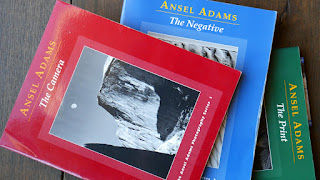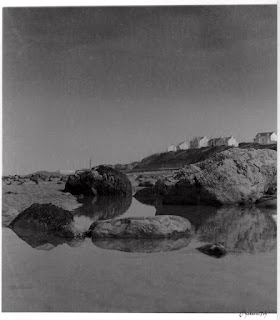On one of the many trips in to London many years ago I found myself strolling down Tottenham court road which meant that a detour into Foils Books Store was on the cards before travelling on. It was a warren of floors dedicated to the written word. A discombobulation of a place for those that did not know where their category of interest was held. Fortunately for me this was the umpteenth visit and I knew which floor I needed. Needless to say that getting there was an endeavour in it's self. Onward and upward to the art/photography department on arrival I stopped momentarily to catch my breath, take in the smell of new books and wonder at the sight. Shelf upon shelf almost to the ceiling of publications standing like solders side by side. Titles like faces undulating along the shelf's as you pass.
I had just dropped in for a look, I had no particular book in mind it was a destination in its own way, away from the frantic streets outside. A moment to feed the mind. As I looked through the sections I came across The Portfolios of Ansel Adams. “That interesting I thought” and flicked through the pages looked at the price put it back on the shelf and moved on looking at and replacing a number of books. It is interesting to note that all the time I was looking at other volumes my mind kept coming back to the Ansel Adams book it had left an impression.
A short time later I was back in the mix of hurrying people in the street with a bag containing the Adams book. I cannot remember why I was in London, where I went next or if I had my camera with me. The only thing I can be sure of is that a tube ride would have been part of my getting home. With a chance to get a proper good look at my purchase.Recently the book is off the shelf and on the coffee table waiting for me to re-antiquate myself with Mr Adams images. I don't know what others do but I like to kick back on the couch with a cup of coffee or tea and spend time with each image studying it in detail. In this case putting the book down at the end of each portfolio to come back to another day.
According to the write up in the book these reproduction are as close as you can get to the original photographs. This I can vouch for having compared images with the same pictures that appear in Ansel Adams 400 photographs book.Looking back I was fortunate to happen upon the collected portfolios book as I do not think I will see an original and or one of his prints in the flesh. But never say never.
This article is the copyright of Mitch Fusco 2022 all rights reserved.

















